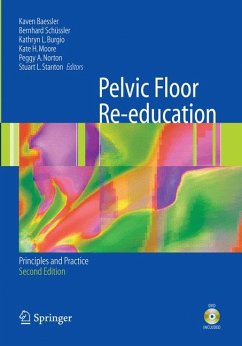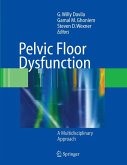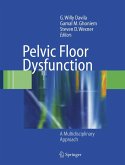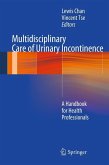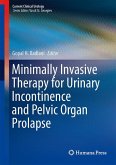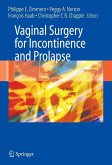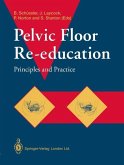Starting with the latest theories on the anatomy, pathophysiology, and possible causes of pelvic floor damage, the importance of pelvic floor evaluation is looked at in order to determine the type of treatment required. Practical techniques of muscle assessment and investigative methodologies are reviewed and up-to-date information on anatomy and physiology is discussed. An algorithmic approach takes the reader through the options for clinical evaluation and treatment. Several re-education techniques are assessed for pelvic floor dysfunction, including isolated muscle exercise, vagina cones, biofeedback control, and electrical stimulation.
This practical book is invaluable reading for all healthcare professionals working with incontinent patients, particularly urogynecologists, obstetricians, gynecologists, and physiotherapists. It also provides a comprehensive but readable source for residents and trainees interested in the scientific and clinical fundamentals of pelvic floor re-education.
Dieser Download kann aus rechtlichen Gründen nur mit Rechnungsadresse in A, B, BG, CY, CZ, D, DK, EW, E, FIN, F, GR, HR, H, IRL, I, LT, L, LR, M, NL, PL, P, R, S, SLO, SK ausgeliefert werden.
'...the book is a good refresher for those currently working in the field of female continence and pelvic floor rehabilitation...the book gives a concise overview of anatomy, diagnosis and treatments with an emphasis on pelvic floor muscle retraining and alternatives if conservative treatment does not produce the desired outcomes...'
Eileen Lavis, Physiotherapist Private Practice Lake Macquarie, 2008 National Continence Scholarship Winner
"This is the second edition ... edited by a respected group of specialists in gynaecology, urogynaecology and gerontology. ... the book is appropriate for a wide range of clinicians including doctors, physiotherapists, nurses and practitioners who care for women with pelvic floor dysfunction. ... The book provides current, evidence-based research for each section, with extensive references for those wishing to read further. ... the book is a good refresher for those currently working in the field of female continence and pelvic floor rehabilitation." (Eileen Lavis, Australian and New Zealand Continence Journal, Vol. 15 (3), 2009)
"This update of a 1994 book comprehensively covers the anatomy, clinical examination, classification, and treatment approaches to pelvic floor function and dysfunction. ... This resource will benefit those in many disciplines who provide care for individuals with pelvic floor dysfunction. It would make an excellent educational tool for residency and fellowship training programs ... . I would recommend this book to anyone who desires to develop a discipline-specific clinical specialty in pelvic floor dysfunction. ... an excellent resource for the many disciplines in this field." (Theresa M Spitznagle, Doody's Review Service, November, 2009)

